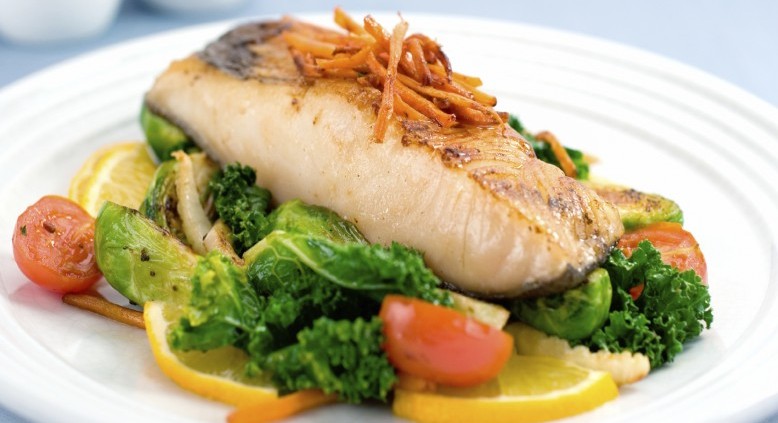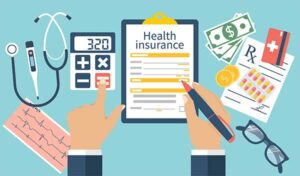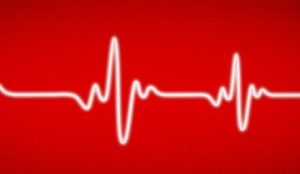There are two types of cholesterol: LDL and HDL. Our bodies need both types, but the LDL (a.k.a. “bad” cholesterol) can lead to heart disease if we have too much of it. In fact, lowering this cholesterol is the best way to protect yourself from getting a heart attack or a stroke.
HDL (the “good” cholesterol) travels through your body and picks up the unneeded bits of LDL cholesterol. It takes it to the liver to break it down and remove it. It’s good to have HDL cholesterol. Finding the balance between the two is the challenge. There are ways to achieve this, and this list should be able to help you make small changes in your life that can put you on the path to lower cholesterol. The bad kind, that is.
1. Get More Exercise

Moderate and vigorous daily exercise can lower your cholesterol, according to most public health organizations. Walking, jogging, biking and even gardening for 30 minutes a day fits this category. You can break up the routine into ten-minute intervals throughout the day and you’ll still get the cholesterol-busting effect, says one cardiologist. Park your car farther from your destination, take the stairs instead of the elevator or take the dog for an extra spin around the block. These are simple ways to add movement to your day. However, a more intense workout might be better. A 2002 study found that these types of workouts were more effective at lowering cholesterol than moderate routines.
2. Choose Dark Chocolate

Studies show that chocolate offers several health benefits. In a study that tested the cholesterol effects of white chocolate versus dark chocolate, the darker version lowered “bad” cholesterol (LDL) by 20% and increased “good” cholesterol (HDL) by 20%. Scientists think it’s because of flavonoids. Dark chocolate contains more of these plant-based antioxidants than the lighter counterparts. Another study saw a 24% increase in HDL (remember, that’s the good kind) after consuming cocoa powder for 12 weeks. If you are going to implement this cholesterol-busting strategy, choose dark or bittersweet chocolate for greatest benefits and eat in moderation.
3. Fill Up On Fiber

Fiber is famous for keeping us regular, but it has other benefits, too. Namely, reducing cholesterol. Soluble fiber is sticky, so to speak, and it can bind with cholesterol and digestive acids in the small intestines. This sticky trio lets the body eliminate the cholesterol. It also reduces the acids, and this causes more cholesterol to be used up replenishing them. Another benefit of fiber is that it is filling. Eating a meal or a snack full of fiber is very satisfying and removes the desire to eat more food. . .which could lead to weight gain, and added cholesterol. Many fruits, vegetables, beans and oats are high in fiber. They’re also sweet and satisfying. Hint, hint.
4. Eat Fish

The Omega-3 fatty acids in certain fish have been linked with lowering triglycerides in the bloodstream. Triglycerides are fats that can lead to clogged arteries and possibly to a heart attack or a stroke. Omega-3 fatty acids may also slow down the growth of plaque in the arteries. All of these leads to blood that can flow more freely through your arteries and veins. An added bonus of eating fish is that it will replace red meat, at least for that meal, and red meat is high in saturated fats. (Is that bad? See #13.) Eating fish two to four times a week is a heart-healthy choice, specifically salmon, herring, canned sardines, trout, or mackerel to name five. But don’t fry them! Broil, grill or steam your fish for the healthiest benefit.
5. Lose Weight

If you can lower your weight by as little as five percent, you can lower your cholesterol. Dropping ten percent, even better. People who are obese typically have high levels of cholesterol. If you can shed some pounds (kg), especially belly fat, you can lower your cholesterol. The first step is to evaluate your eating habits and daily routine. Where can you cut back your eating? Where can you increase your activity level? These are the first two questions with which to grapple before you begin to fight your cholesterol by battling the bulge. You can do it!
6. Go For Olive Oil

Research shows that using olive oil can lower “bad” cholesterol levels (LDL). Olive oil provides monounsaturated and polyunsaturated fats. These are known as “healthy” fats that combat bad cholesterol and boost good cholesterol (HDL). Olive oil is a key component of the Mediterranean Diet. People from that region of the world who live on this diet live longer and have lower risks of heart disease, high blood pressure and stroke, compared with North Americans and Northern Europeans. Opt for olive oil on your salad instead of fatty dressings, and skip the sauce and sprinkle olive oil and herbs over your pasta.
[/nextpage]
[nextpage]
7. Say No To Trans-Fats

Trans fats are created by a chemical process in. Hydrogen is added to liquid vegetable oils to improve taste and texture to foods and to make them more solid. They are inexpensive to produce, easy to use and last a long time. That’s good news for creators of baked goods and restaurants that deep fry their foods. Trans fats are also in stick margarines. For the consumer, taste aside, it’s all bad news. Trans fats raise your LDL (bad cholesterol), lower your HDL (good cholesterol) and increase your risk of developing heart disease among other unpleasant ailments. Read the labels on the products you want to purchase. If you see “trans fat” or “partially hydrogenated oil” (code for trans fat), put it back on the shelf.
8. Limit Saturated Fat Intake

Hold off on the extra hamburger! Most of the saturated fat we eat comes from animal products. If you eat lamb, beef, pork or poultry with the skin, say hello to saturated fat. It’s also in dairy products labeled 2% or whole fat as well, and it stars in coconut oil, palm oil and cocoa butter. But it’s not necessarily a bad thing. Recent research shows that our bodies need saturated fat. Just don’t go overboard! Best to consume saturated fat in moderation. So hold off on the extra hamburger. If you’re looking for foods with unsaturated fats, some ideas include vegetable spreads, avocado, nuts and oily fish.
[/nextpage]
[nextpage]
9. Go With Garlic

With its pet name, “the stinking rose,” garlic has been used for centuries to ward off vampires, general evil, and aggressive boyfriends everywhere. But does it ward off, or lower, cholesterol? In 2007, a report spread through the media debunking the idea that garlic lowered unhealthy cholesterol levels. Then, in 2013, a research study showed that garlic supplements did, in fact, lower cholesterol. So which is it? In the few studies that were done using the actual vegetable, the results seem to say that the positive effect garlic has on cholesterol is only short term. One doctor, a naturopathic doctor and botanical medicine expert, said that garlic prevents plaque from forming in the arteries. With the exception of your relationships, what can you hurt by eating some garlic?
10. Stop Smoking

There’s “good” cholesterol (HDL) and there’s “bad” cholesterol (LDL). Smoking raises the bad kind. Toxins in the smoke enter the lungs and later affect the metabolism of lipids, causing LDL numbers to climb. Research suggests that the smoke also lowers the good cholesterol. If you already have high cholesterol, smoking can only make it worse. On the other hand, quitting smoking will start to have a positive effect on your good cholesterol levels. One study showed that people who gave up the sticks saw a 5% rise in their HDL levels in one year. If you don’t smoke but you are around others who do, their smoke can also negatively affect your cholesterol levels. Quit smoking and do everybody a favor.
[/nextpage]
[nextpage]
11. Laugh More

There is truth to the maxim “laughter is the best medicine.” Dr. Lee Berk, an immunologist at Loma Linda University’s School of Allied Health and Medicine, has been studying laughter’s effects on the body since the 1980s. What Berk and his colleagues found was that laughter, real laughter, helps the brain regulate stress hormones and produce anti-bodies and endorphins. As for cholesterol, laughing increases HDL. That’s the good cholesterol. With that in mind, a polar bear and a police officer walk into a bar…
12. Eat Avocados

Turns out eating more avocado is good for your cholesterol as well. Pantothenic acid and fiber, both of which are high in this drupe, help your body’s cholesterol. Plus, a study from Penn State University showed that those who ate a moderate-fat diet that included one avocado a day reduced their cholesterol by twice the amount of those whose diet was avocado free. This fruit has also been show to increase good cholesterol (HDL). Avocado also contains a healthy amount of potassium. Although no direct link between cholesterol and potassium as been established, many diets that lower cholesterol are high in potassium. Could you pass the guacamole?
[/nextpage]
[nextpage]
13. Try Oats

Another good, simple and tasty way to lower your cholesterol is to change your breakfast. A bowl of oats, oatmeal or oat bran can lower your LDL (you know which one this is by now, right?) without affecting your HDL (good cholesterol). Let’s get back to stickiness. The soluble fiber in oats, when digested, becomes sticky. This binds with any cholesterol and helps the body eliminate it. At least, that’s what scientists credit as the reason oats are so good at lowering cholesterol. In fact, one study showed oats were about as effective as prescription drugs at bringing down LDL levels. Oats have two advantages over meds: they’re more filling (of course) which means you’re more likely to not want to eat more after your morning bowl, and they taste better.
14. Drink Red Wine

Studies show that red wine can help lower your cholesterol. One study reported that after eating meat, an LDL cholesterol booster, drinking red wine prevented a rise in cholesterol. Antioxidants in the wine impeded the cholesterol compounds from being absorbed into the bloodstream. Cheers! Rather, l’chaim. The study was conducted at the Hebrew University in Jerusalem. The American Heart Association recommends women limit their wine consumption to one drink per day, and men, two drinks per day. If you want the benefits but don’t want the alcohol, drink grape juice or green tea for the same antioxidants.
[/nextpage]
[nextpage]
15. Go Nuts

Nuts are full of protein, fiber, monounsaturated fats, vitamins, nutrients and antioxidants. Not only that, they taste good, too! They also help lower cholesterol. A study published in the American Journal of Clinical Nutrition stated that people who at 1.5 oz of walnuts (seven whole nuts) six days a week for one month lowered their LDL by 9.3%. Almonds also work. A separate study found that eating half a cup of almonds lowered the “bad” cholesterol by 10%. Snacking on nuts has another benefit: it prevents you from snacking on something that will bump up your cholesterol. When you need a snack, excuse the pun: go nuts!
16. Eat Beans

When you eat beans, you load up on iron and vitamin B-6. You also get a whole lot of dietary fiber, and this is the key to the cholesterol-lowering benefits of this legume. Researchers at Arizona State University Polytechnic found that by adding ½ cup of beans to soup, you can lower your total cholesterol up to 8%. Try kidney, black or pinto beans because each supplies about one-third of the daily fiber your body needs.
[Featured image credit: coldbrookins.com]
[/nextpage]




